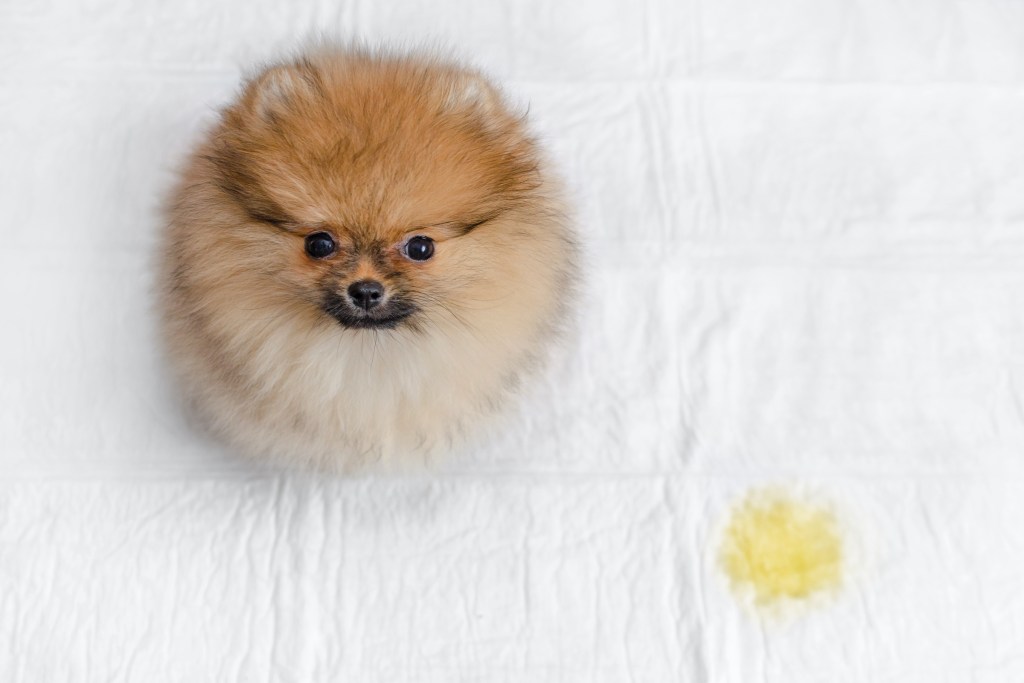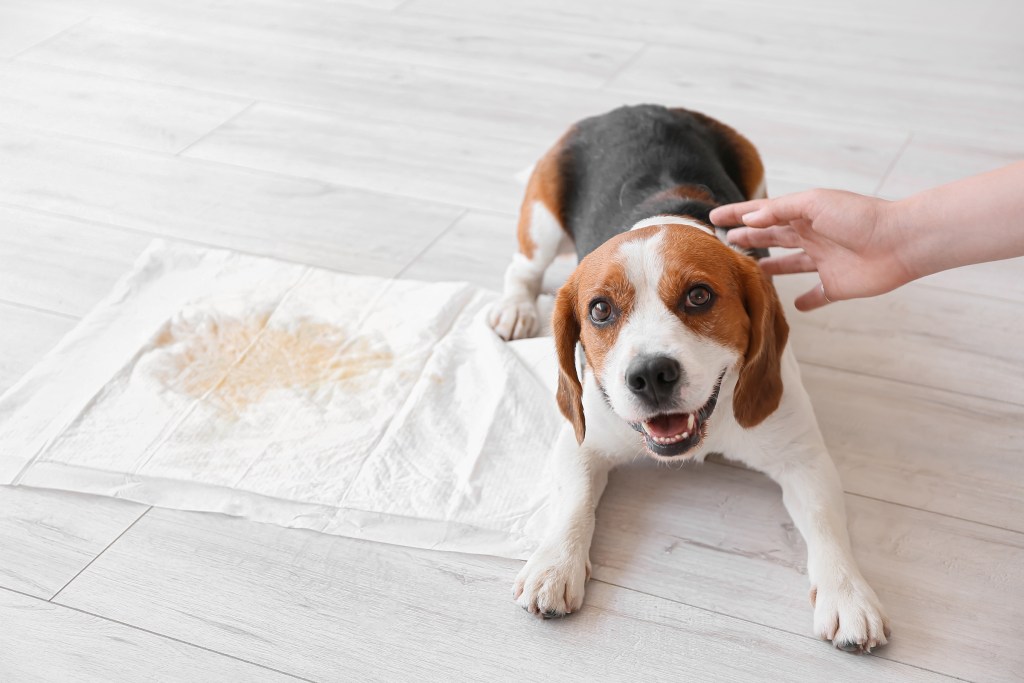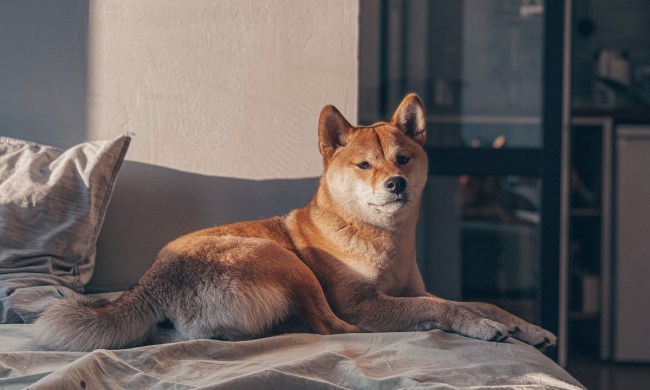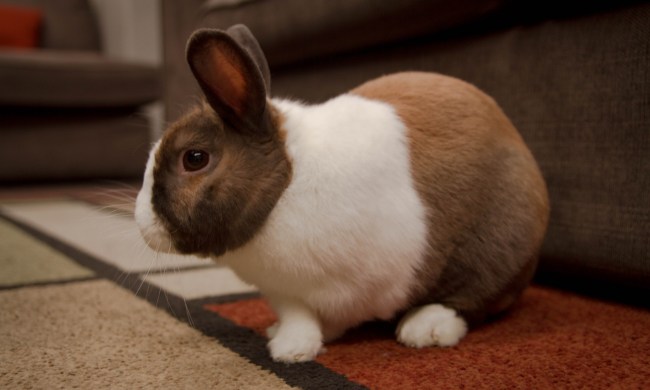Don’t be fooled by their frequent naps and tiny bodies—puppies are a lot of work! They leave behind a bigger mess than you’d think, and their adorable size makes feeding and potty breaks more frequent. Still, you can start house training your new furry friend as soon as you bring them home. Beginning while they’re young will allow your pup to get the hang of their bathroom routine as well as expectations. They may not be able to hold it all day, but you can still avoid a few accidents by getting a head start.
Ready to get started? Here’s how to house train a puppy from day one and beyond. Good luck!

How long does it take to house train a puppy?
There are many factors that determine how long it takes for a pup to master potty training, starting with the age and size of the dog. According to the American Kennel Club, very young puppies may need to take bathroom breaks every half hour to hour, in addition to other scheduled times.
Tiny pups with tiny bladders will also need more frequent trips outside—so be patient! Potty breaks will become less common as your pup gets older, but there are also other tools you can use to make frequent bathroom breaks as easy as possible. Crates, potty pads, and pet gates are just a few of these options.
Overall, it can take anywhere from weeks to months for your pup to fully master their bathroom routine. The Veterinary Centers of America estimates that many dogs take 8-12 weeks to be trained well enough to earn more freedom, though the pet pros at Purina note that some pups may take up to six months to be completely accident-free.

Housebreaking a puppy
There’s no one-size-fits-all approach to potty training, which is good news for parents of stubborn or hard-to-train pups. Whatever method you try, it’s important to keep up a consistent routine, as dogs are creatures of habit.
House training schedule for puppies
When you first begin house training, your puppy will need to go out more frequently than they will once they’re older. Until they’re a bit older and can hold it for longer, notes VCA Hospitals, dogs need to eliminate:
- During the night, until they can hold it overnight (usually between 2-5 months of age)
- After meals or lots of water
- After waking up
- After high-energy activities (such as running and playing)
- “Every 1-2 hours when awake, in addition to the times above”
This last one is meant more for younger dogs and those who have yet to master potty training, but pet parents of smaller dogs may find this useful, too. Remember to use positive reinforcement when your puppy does their business where you want them to!
When thinking through your ideal schedule, consider how old your pup is. The American Kennel Club recommends the “month plus one” rule—just add one to your pup’s age (in months) to learn the maximum number of hours they should be able to hold it while you’re out and about. While you’re gone, you can confine your buddy to a fenced-off area where they can relieve themselves as needed, or you can use a crate to discourage any accidents.
Crate training a puppy
If you opt to use a crate when leaving your puppy home alone, or even as a space for everyday use, make sure not to buy a crate that’s too big. Even if your pup still has some growing to do, a crate that’s too large will encourage them to eliminate in one corner and sleep in another. The Petco pros suggest looking for a crate that gives your furry friend just enough room to stand up, lie down, and turn around.
Crate training your puppy can be a great way to give them a safe place to rest both while you’re gone and whenever they need their own space. Since dogs are den animals, they might find their crate particularly comforting.
Paper training
You can opt to take your pup to potty on a potty pad instead of going outside, but make sure to designate a specific spot for this activity somewhere in your home. Having a “potty spot” will help your dog understand the difference between going potty in the house (or backyard) and on their pad. Don’t forget positive reinforcement!
How to respond to accidents
No matter how hard you may try to limit them, accidents are a natural part of potty training. Don’t punish your dog for their accident, which might frighten them and make them less likely to respond to training. Instead, the Humane Society recommends interrupting your pup in the act (if you can) and taking them to their designated potty spot. Be sure to still reward them if they finish the job as they’re supposed to.
Oftentimes, notes Petco, dogs will return to eliminate in the same spots, so make sure to thoroughly clean any stains and marked areas. Investing in an enzyme-based cleaner can be extra effective, too.
If it seems like there are a lot of steps to this house training thing, there are! Don’t worry about meeting any expected schedule or getting your pup 100% accident-free. Taking it one step at a time is a perfect strategy—as long as you have plenty of treats for your pup, that is!



